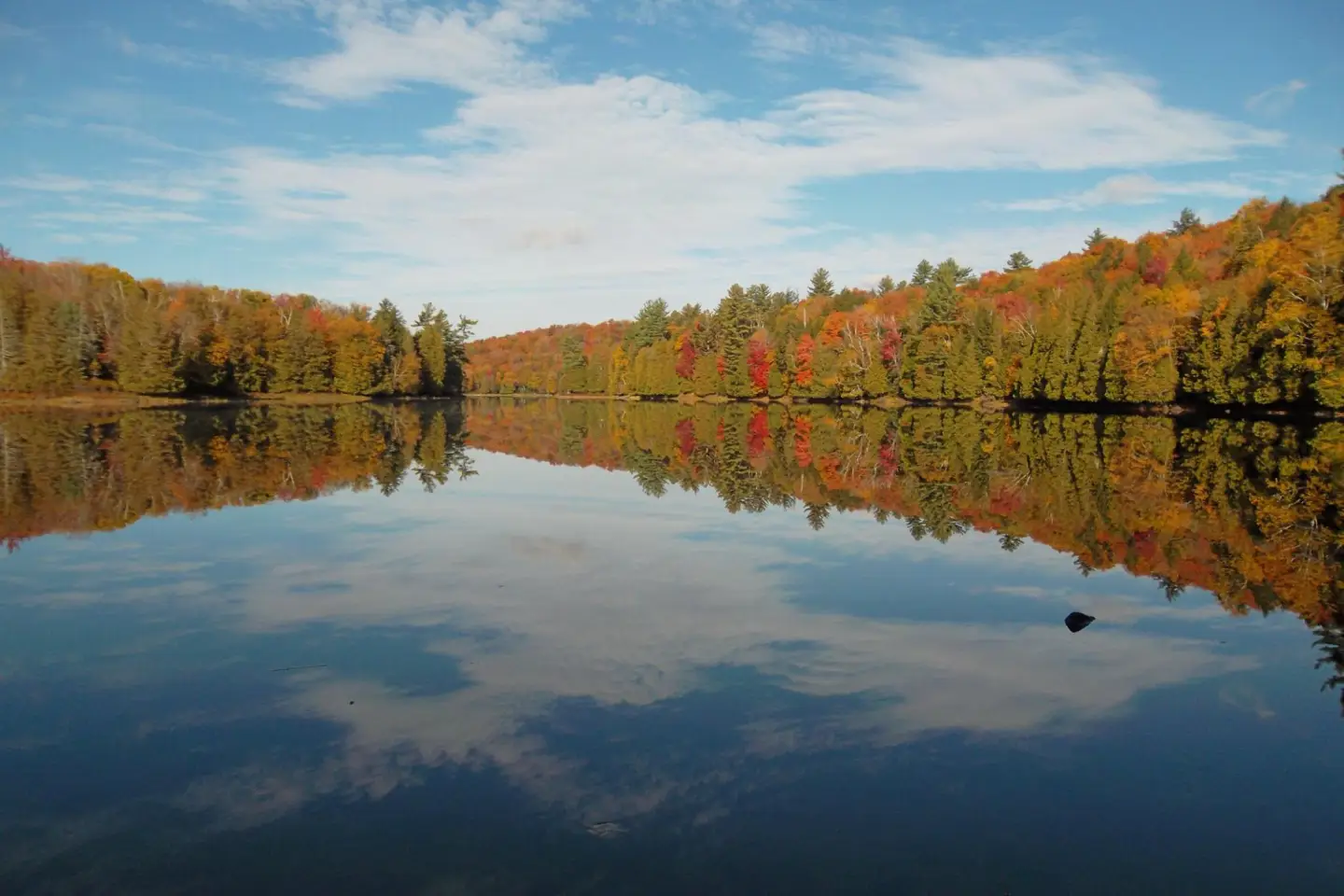Every autumn season I try to visit the charming mix of trees at the Adirondack Interpretive Center in Newcomb. This educational nature complex has everything for an immersive fall foliage experience, from groomed trails for hiking to knowledgeable guidance from staff in the natural history museum.
Know some trees
A certain kind of foliage is unique to certain regions of North America, which supports the largest variety of deciduous trees whose leaves change color as winter approaches.
Environmentally speaking, the Adirondacks is very much like New England. Only the giant glacier dug lake, Lake Champlain, got in the way when state boundaries were being drawn. Still, anyone who is a fan of "New England foliage" needs to consider that this area not only contains all the trees most needed for a spectacular foliage display, there are six million acres of them.

Perhaps no other tree is so prized for its leaves as the lovely sugar maple, which is also the state tree of New York. The leaves move through several shades of green during the growing season, then are among the first leaves to turn, moving from yellow, to orange, and then blazing red into the fall. Sugar maples are known for their picky preferences, too, needing a highly specialized climate of freezing nights with mild days.
Other species are important in the best foliage mix, such as the birches and beeches who contribute shades of yellow and rusty reds through the fall. Exercise those tree spotting skills by knowing that birch trees have double-toothed leaves, with small teeth bordering the larger teeth. Beeches are single-toothed, with all teeth the same size. Easy!

The AIC system of trails features a lot of shoreline views, for twice the color possibilities.
Know some science
Thanks to the information and classes offered by the Aidrondack Interpretive Center, I know that much of the best fall color comes from a forest known as "northern hardwoods type," which their trails provide in abundance.

For an excellent "warm-up," the AIC recommends the 0.6-mile Rich Lake Trail. This trail has views of Rich Lake and Goodnow Mountain for a preview of what other trails are doing at any point during the fall. This is an easy access trail for all age and skill groups, with outlook platforms and benches to get full enjoyment out of the hike.
Tree leaves have different kinds of pigments which combine at different strengths at different times of year. During the growing season of spring and summer, the green pigments (chlorophyll) are so abundant they mask all the other colors. Early in spring the yellow pigments (carotenoids) have a strong green-gold presence until the green gets up to full speed. Then, in fall, the green fades and lets other colors dominate, such as the orange which brightens as the yellows are joined by the red and purple (anthocyanins) pigments. These are especially strong in maples and oaks.

Goodnow Mountain itself is a six mile round trip with great views, especially since there's a restored fire tower on the summit.
Know some options
AIC has staff and interns devoted to learning, and teaching, about the natural world. The most intensive such program is their annual Philosophers' Camp, modeled after an Adirondack tradition.
In early October for the past four years, the AIC recreates the original Philosophers’ Camp enjoyed by Ralph Waldo Emerson and a band of intellectual adventurers in 1858. They camped in the Adirondacks with guides, calling themselves "freemen of the forest" as they declared nature would let them lose the restrictions of civilization, with the goal of breaking down societal and professional boundaries for the easy exchange of ideas. Though the Civil War disrupted everyone's plans to regroup, the trip became famous when Emerson composed "The Adirondacs," which was about the special power of the Adirondack wilderness:
Nature spoke
To each apart, lifting her lovely shows
To spiritual lessons pointed home.

There are lots of presentations, school groups, and guided outings held at the AIC. As seen below, AIC intern Andrew and Wildlife Conservation Society intern Alex teamed up for a program on beavers for the Newcomb Youth Program.

Passing on the joy of the natural world is the mission of the Adirondack Interpretive Center, which is reflected in their name. Whether I want to "read the subtitles" to have the science of the Adirondacks interpreted for me, or just go it alone in the poetic nature that is so easy to enjoy here, I find the AIC to be one of my favorite places.
Especially in the fall.
Settle into a great place to stay. Explore more hiking. Keep up with our Foliage Report.
This week in ADK news:




